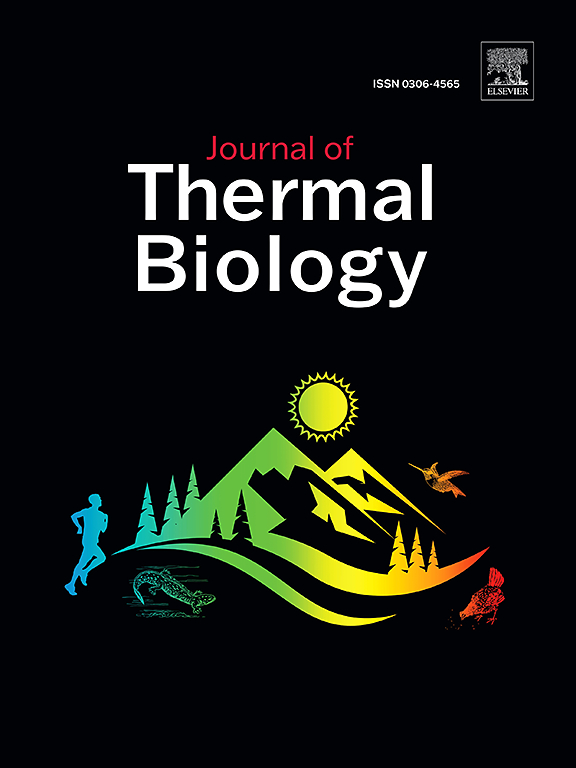热应激下反刍动物基因表达的科学知识——科学计量学综述。
IF 2.9
2区 生物学
Q2 BIOLOGY
引用次数: 0
摘要
热应激可以改变个体分子反应中基因的表达。这些基因的鉴定可以更好地理解分子反应,识别生物标记基因和间接反应途径,有助于遗传改良研究,动物福利,分离更多的耐热品种和减轻热应激的影响。本文综述了反刍动物在热应激条件下基因表达的科学研究现状,确定了研究最多的物种、生物系统和基因,以及相关的生物学途径和过程。数据集的文章在Web of Science数据库中编译,分别使用CiteSpace、RStudio、Excel和GraphPad Prism程序和KEGG(京都基因与基因组百科全书)数据库进行细化和分析。这些出版物形成了一个包含271篇文章的数据集,h指数为37。自2011年以来,出版物数量有所增加。发表频率最高的国家是印度、美国、中国和巴西,反刍动物种类是牛、水牛、绵羊和山羊,所有动物技术感兴趣,生物系统是繁殖、血液和哺乳,由于生产质量和数量的经济重要性,便于收集和体外研究的可能性。牛与其他反刍动物进行了广泛的研究。研究最多的是HSP70基因,其次是HSP家族、HSF、BAX、TLR和BCL-2,这些基因都可以作为热应激的分子标记。基因的主要途径和生物学过程在牛的癌症途径;山羊的混合,包括myd88依赖性toll样受体信号通路和脂溶性;绵羊的氧化还原酶;在布法罗,是BCL-2家族。分子反应仍然是最近的,尚未确定。本文章由计算机程序翻译,如有差异,请以英文原文为准。

Scientific knowledge about gene expression in ruminants under heat stress - A scientometric review
Heat stress can alter the expression of genes in the individual's molecular response. The identification of these genes makes it possible to better understand the molecular response, identifying biomarker genes and indirect response pathways that can help with genetic improvement studies, animal welfare, separating more thermotolerant varieties and mitigating the effects of heat stress. The aim of this scientometric review was to characterize the state of the art of scientific research into gene expression in ruminants under heat stress, to define the most studied species, biology systems and genes, as well as the related biological pathways and processes. The articles for the dataset were compiled in the Web of Science database, refined individually and analyzed using the CiteSpace, RStudio, Excel and GraphPad Prism programs and the KEGG (Kyoto Encyclopedia of Genes and Genomes) database. The publications formed a data set containing 271 articles and an H-index of 37. The number of publications increased from 2011. The countries with the highest frequency of publications are India, the United States, China and Brazil, the ruminant species are cattle, buffaloes, sheep and goats, all zootechnical interest, and biology systems was reproduction, blood and lactation, due to the economic importance of the quality and quantity of production, to the ease of collecting and possibility of studies in vitro. Cattle have been extensively studied in comparison to other ruminants. The HSP70 gene has been the most studied, followed by the HSP family, HSF, BAX, TLR and BCL-2, these genes can be molecular markers of heat stress. The main pathways and biological processes of genes were in cattle the cancer pathway; in goats the Mixed, incl. myd88-dependent toll-like receptor signaling pathway, and lipopolys; in sheep the oxidoreductase; and in buffalo it was the BCL-2 family. The molecular responses are still recent and have not been established.
求助全文
通过发布文献求助,成功后即可免费获取论文全文。
去求助
来源期刊

Journal of thermal biology
生物-动物学
CiteScore
5.30
自引率
7.40%
发文量
196
审稿时长
14.5 weeks
期刊介绍:
The Journal of Thermal Biology publishes articles that advance our knowledge on the ways and mechanisms through which temperature affects man and animals. This includes studies of their responses to these effects and on the ecological consequences. Directly relevant to this theme are:
• The mechanisms of thermal limitation, heat and cold injury, and the resistance of organisms to extremes of temperature
• The mechanisms involved in acclimation, acclimatization and evolutionary adaptation to temperature
• Mechanisms underlying the patterns of hibernation, torpor, dormancy, aestivation and diapause
• Effects of temperature on reproduction and development, growth, ageing and life-span
• Studies on modelling heat transfer between organisms and their environment
• The contributions of temperature to effects of climate change on animal species and man
• Studies of conservation biology and physiology related to temperature
• Behavioural and physiological regulation of body temperature including its pathophysiology and fever
• Medical applications of hypo- and hyperthermia
Article types:
• Original articles
• Review articles
 求助内容:
求助内容: 应助结果提醒方式:
应助结果提醒方式:


